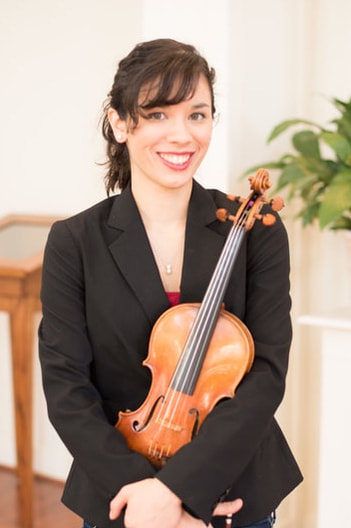The second piece is having your children take ownership of their violin playing. If your child is old enough to play violin, they're old enough to be taught ownership. Sometimes, when you're a kid, you feel like your life is completely controlled by the adults around you (and let's be honest - it usually is). That can result in a feeling of powerlessness. If violin is something that a kid feels they have no control over, it will almost certainly be one of the things that they use when they start testing their limits. I have quite a few students in my studio who are creative, intelligent kids who love violin but refuse to practice because it is something their parents want them to do, and they're at the stage where they don't want to do what their parent tells them, regardless of whether it's cleaning their room or practicing violin.
An important public service announcement: Violin should always, always be more the child's thing than the parent's thing. Being a violinist is the child's identity. We want our kids to play violin because they love it, want to make music, and want to play well. They should never feel obligated to play to live out their parents' dream or to fit into some pre-determined notion of what the perfect child does. Music is not a box to check on the list of well-rounded extracurricular activities. It is a passion, and creating art is one of the highest privileges of being human.
It's true that there will be stages where the parent needs to motivate the student and keep them practicing when they rather wouldn't, but playing the violin should at its core be something that the student wants for their life. There is a big difference between not wanting to play music and not wanting to practice.
Violin lessons (like pretty much everything) start with the parent doing everything for the child and end with the child doing everything. This process takes years, especially if the student starts young. Remember that your eventual goal is to have your child driving themselves to lessons, practicing independently, organizing their own schedule - and one day, even paying for their own lessons (if they continue to play through college and into adulthood).
So, how do you teach your kids to take ownership of their violin playing? You start from the very first day.
- Have them carry their own instrument. Violins come in fractional sizes for a reason. If they're old enough to play the violin, they're old enough to carry the case responsibly. No matter how much they whine, no matter how much they drag their feet, make them carry their own violin. It's an important part of the bonding process between violinist and violin, and essential for ownership.
- Students should prepare their own violin and bow for playing. They should open the case, attach any shoulder rest or sponge, and tighten/rosin the bow. Very young children will need to be guided by their parents in this, but learning proper care and setup of the instrument is critical. They need to learn it as soon as possible!
- Students should fill out their own practice charts. If your teacher gives you a practice chart, let the student take responsibility for checking off each item on the chart as you complete it. If your teacher doesn't give you a practice chart, check The Practice Shoppe and have the student fill in their assignments! If your child isn't comfortably writing yet, the parent can fill in the chart, but the child should check everything off. Let them choose a special pen or a colored pencil or crayon to mark off the chart.
- Let students choose the order of practice. Let your child choose what to do first. The rule should be that they have to do everything on the chart, but they can pick the order.
- Give your child a choice about when to practice. Whether or not the student practices should not be a choice. Except in extreme circumstances, practice is every day. However, you can give the child a choice about when they are going to practice. One of my parents told me that she gives her son a choice: Either he can practice before his tv time OR he can practice right after dinner. If he chooses not to practice before tv time, then he must practice after dinner.
- Involve your students in the communication process with the teacher. As soon as they're old enough, the student should be the one emailing the teacher with questions or with scheduling issues. It can be from the parents' email account if they don't have their own, but the student should take responsibility for communicating with the teacher. If the student isn't old enough, they should sit with the parent while the parent contacts the teacher and give input. Again - ownership. It's their violin lesson.
The point of all of this is to help your student feel like violin is theirs. Once a student really takes ownership of their violin playing, they will feel a sense of ownership and pride. Knowing that they can set a goal for themselves, create a plan to accomplish that goal, and execute their will build true self-esteem and confidence. They will be healthier, happier, and more responsible human beings and dedicated, creative, passionate musicians.

 RSS Feed
RSS Feed